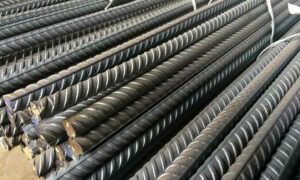Steel Bars in Reinforcement
All finished TMT steel bars for reinforced work should be neatly rolled to the dimension and weights as specified. They should be sound, free from cracks, surface flaws, laminations, rough, jagged and imperfect edges and other defects. It should be finished in a work manlike manner.

General Precautions for Steel Bars in Reinforcement
Top TMT bars are clear, free from loose mil scales, dust and loose rust coats of paints, oil or other coatings which may destroy or reduce bond strength.
Steel bars should be stored in such a way as to avoid distortion and to prevent
deterioration and corrosion.
- Steel bars should not be clean by oily substance to remove the rust.
- The TMT bar is bent correctly and accurately to the size and shape as shown in drawings.
- If possible, the bar of full length is used.
- Overlapping bars do not touch each other and these should be kept apart with concrete.
- The overlap if given should be staggered.
- The cranks in the bar at the end should be kept in position by using spots.
- The steel bars should not be disturbed while lying cements concrete.
- Required cover under steel bars should be given before laying the cement
concrete. - No overlap is given in the bar having a diameter more than 36 mm, if required, the bar should be welded.
Introduction
Deterioration of reinforced concrete caused by corrosion of the carbon steel reinforcing bars (rebars) is a worldwide problem. The corrosion product (“rust”) occupies a greater volume than the original steel bar and this creates a pressure which causes cracking and subsequent spalling of the surrounding concrete.
Deformed steel bars are also best for using.
Affordable and Safe Construction in the 21st Century Steely Protection Against Earthquake Damage Enhancing the Safety of a Building Stainless Steels
